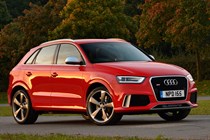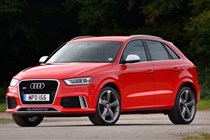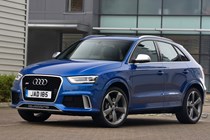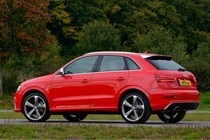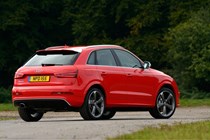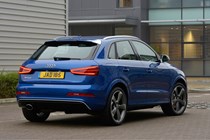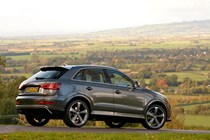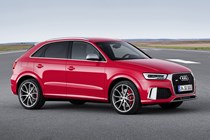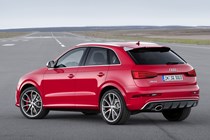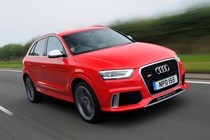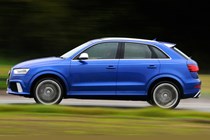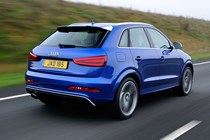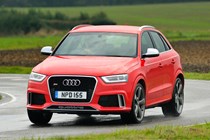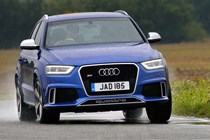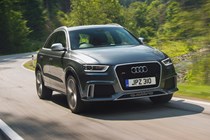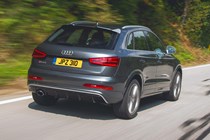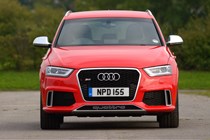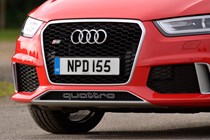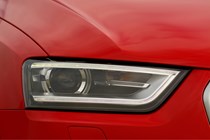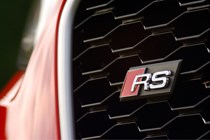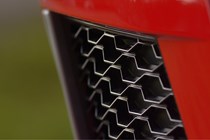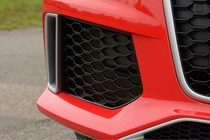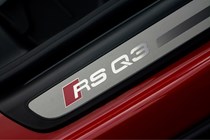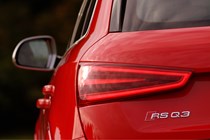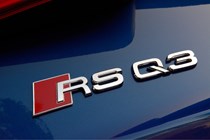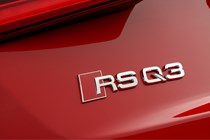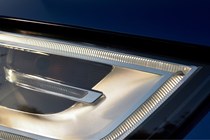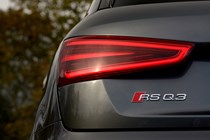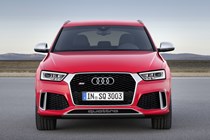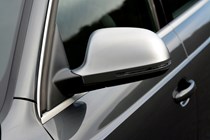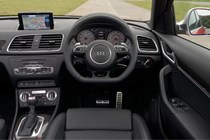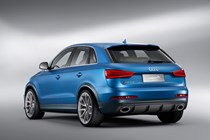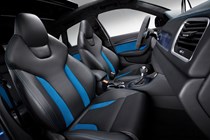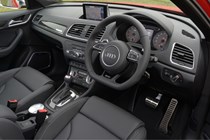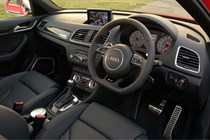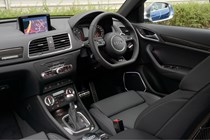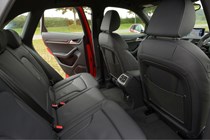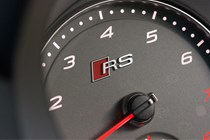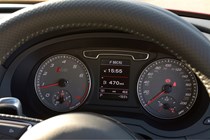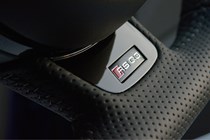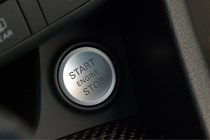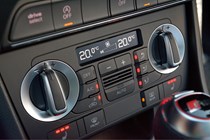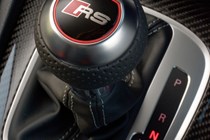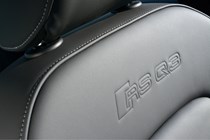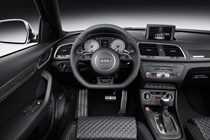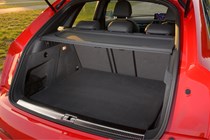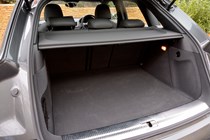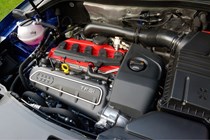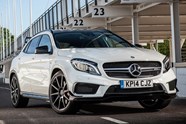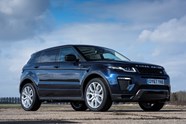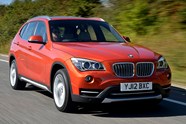Audi Q3 RS review
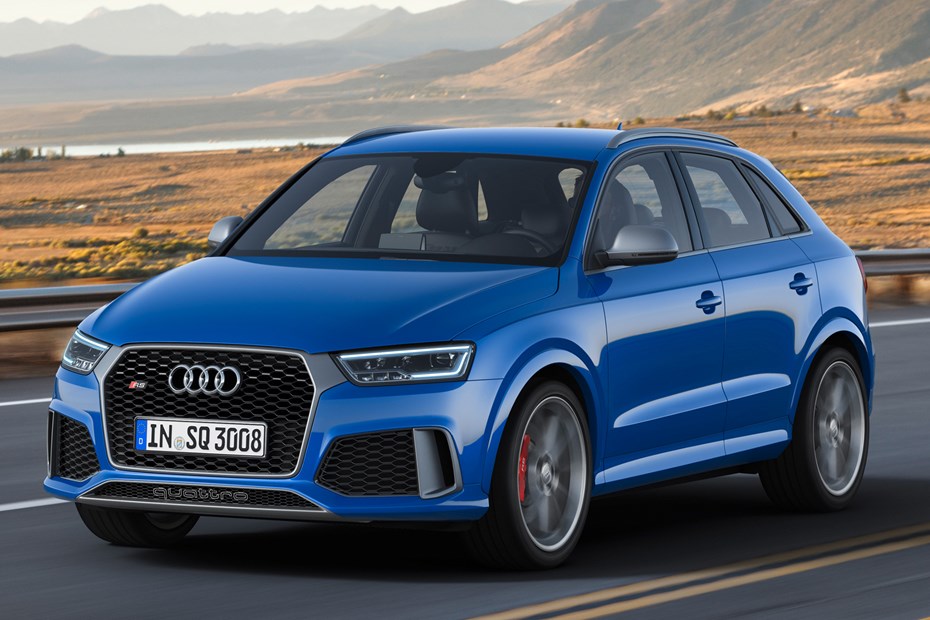
At a glance
| Price new | £42,380 - £48,535 |
|---|---|
| Used prices | £9,589 - £18,350 |
| Road tax cost | £415 |
| Insurance group | 37 - 43 |
Get an insurance quote with

|
|
| Fuel economy | Not tested to latest standards |
| Range | 450 miles |
| View full specs for a specific version | |
Available fuel types
Petrol
Pros & cons
- Seriously fast
- Loads of grip
- Packed with equipment
- Expensive to buy
- Less practical than Q3
Audi Q3 RS (13-17) rivals
Overview
When launched, the Audi RS Q3 had absolutely no direct rivals. Furthermore, it’s the first time the company has seen fit to equip a small crossover (a blend of hatchback and small off-roader) with high-performance equipment from its RS range.
Although we’re expecting competition from the likes of the Range Rover Evoque and BMW’s X1, for now the RS Q3 is in a class of one. It’s an exciting car to drive, covering ground very quickly, but purists may bemoan its lack of pin-sharp engagement.
Blends off-road looks with on-road speed
That said, it’s altogether unlikely to appeal to those wanting a hardcore ultimate driving machine. Such drivers are going to be drawn to hot hatchbacks or focused sports cars instead.
What the RS Q3 does very well is blend the Q3’s endearing qualities – namely a beautifully crafted interior, fashionable looks and relatively high driving position – with the sort of performance that can’t fail to raise a smile.
The powertrain
The 2.5-litre, five-cylinder TFSI engine is the same as in the TT RS and RS 3 Sportback. In the RS Q3 it is linked exclusively to a seven-speed S tronic twin-clutch transmission. The engine develops 306bhp and maximum torque of 420Nm is delivered between 1,500 and 5,200rpm. For the first time the engine will feature standard start-stop which helps to return 32.1mpg on the combined cycle. This equates to a CO2 output of 206 g/km.
Audi’s Drive Select system is installed as standard and this means drivers can choose between auto, comfort and dynamic modes depending on the situation. This system adjust the steering weighting, throttle and gear responses and gives the driver greater flexibility on the road.
Exterior modifications
As with most high-performance Audi models, only true aficionados are likely to recognise the RS Q3 over its more humble Q3 donor vehicle. RS-specific body detailing includes a high-gloss black honeycomb front grille and RS bumpers with a quattro emblem in the air intake.
The rear features a diffuser and a large elliptical tailpipe. A roof spoiler, roof rails in matt aluminium and special door sill plates and trim strips also add sporting emphasis. For even more differentiation, RS Q3 customers can choose an exclusive body colour – Sepang Blue pearl effect – from the list of eight available.
Sitting on 20-inch alloys, the RS Q3 has also been lowered 25mm to improve handling and reduce body-roll.
Facelift for 2015
The entire Q3 range was updated for 2015 and the RS model bore the brunt of the changes. Power and torque were increased by 30bhp and 30Nm respectively, while the gearbox was tweaked to make it faster and smoother. There’s a powered tailgate as standard now and LED lighting both front and rear. In performance terms the big news is the 0-62mph time, which drops to 4.8 seconds to match this car’s only rival – the Mercedes-Benz GLA 45 AMG.
Read on for the full Parkers Audi RS Q3 review.



